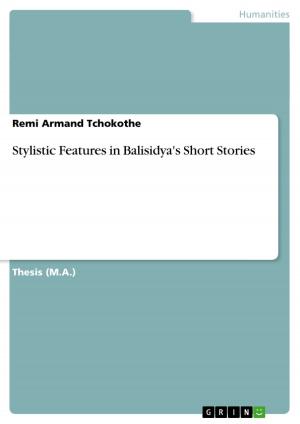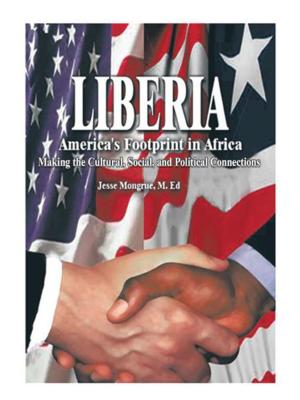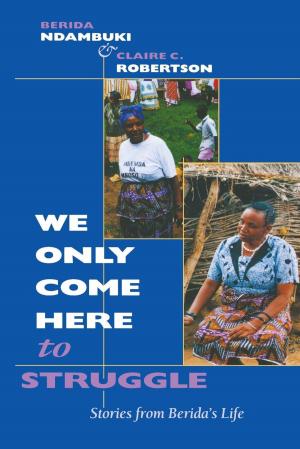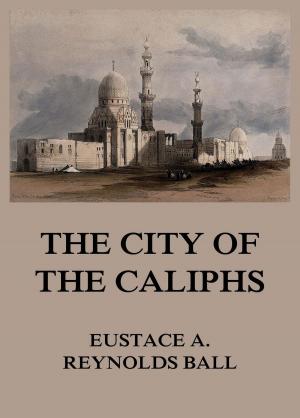| Author: | Dennis Mensah | ISBN: | 9781301813254 |
| Publisher: | Dennis Mensah | Publication: | March 3, 2013 |
| Imprint: | Smashwords Edition | Language: | English |
| Author: | Dennis Mensah |
| ISBN: | 9781301813254 |
| Publisher: | Dennis Mensah |
| Publication: | March 3, 2013 |
| Imprint: | Smashwords Edition |
| Language: | English |
This interesting research publication traces the origins of the Ashanti people, their historical links to the mining and trading of the precious mineral of gold and their migration into the Southern Forests of what is now the modern-day country of Ghana. This publication reveals the origins of trade relations with the European nations in the 15th Century, the truth about the role played by the Ashanti Kingdom in the Trans Atlantic Slave Trade and the reasons why it participated in supplying captives who were transported to the Americas to work on plantation fields. Chapter two covers other powerful Akan Kingdoms that existed before the Ashanti Empire and also how their histories overlapped with the emergence of a new imperial power. Chapter 3 will explain how a particular clan that originally settled in the small town of Kumase is directly linked to the formation and emergence of the Ashanti Kingdom and Empire. This Chapter also covers the important roles played by two Kings of Kumase before the formation of the Ashanti Kingdom. Chapter 3 also covers the story of the sacred ‘Golden Stool’ and explains how it emerged to become the important symbol of Asante Union. The author in Chapter 4, explains the important roles played by King Osei Tutu (1) and his Chief Adviser, Priest Okomfo Anokye, in building the powerful Ashanti Empire and the role played by the sacred ‘Golden Stool’. This chapter also explains how after the death of King Osei Tutu, the Ashanti Empire continued to expand rapidly in size throughout the 18th Century. Chapter 4 contrasts the reigns in the 18th Century, of dynamic ‘’warrior kings’’ such as King Osei Tutu (1) and King Opoku Ware (1) with King Kwadwo Okoawia who continued to expand the Empire but also introduced wide ranging reforms to improve the administration of Government.
Unfortunately, the reign of King Kwadwo Okoawia is relatively unknown and the author highlights the point that his rule was just as effective as his more famous predecessors and led to economic prosperity. King Kwaku Dua (1) was also a more peaceful monarch and ruled in the 19th Century. The volumes of commercial trade with Britain ‘’boomed’’ during the reign of King Kwaku Dua (1) and this greatly benefited the economies within the Ashanti Empire. Unfortunately, the reigns of King Kwadwo Okoawia and King Kwaku Dua (1) remain largely unknown and therefore, the author highlights the positive contribution that they made to the history of the Ashanti Empire. Chapter 4 also covers all of the key events of the 18th and 19th Centuries including all of the major wars fought by the Ashanti National Army, Peace Treaties and the reigns of different Kings. The author also examines the organization and structure of the Ashanti National Army which was a formidable military force. In addition to this the author explains the Administration and Governance System of the Ashanti Empire and the important role of the ‘’Queen Mother’’ of Asante.
This interesting research publication traces the origins of the Ashanti people, their historical links to the mining and trading of the precious mineral of gold and their migration into the Southern Forests of what is now the modern-day country of Ghana. This publication reveals the origins of trade relations with the European nations in the 15th Century, the truth about the role played by the Ashanti Kingdom in the Trans Atlantic Slave Trade and the reasons why it participated in supplying captives who were transported to the Americas to work on plantation fields. Chapter two covers other powerful Akan Kingdoms that existed before the Ashanti Empire and also how their histories overlapped with the emergence of a new imperial power. Chapter 3 will explain how a particular clan that originally settled in the small town of Kumase is directly linked to the formation and emergence of the Ashanti Kingdom and Empire. This Chapter also covers the important roles played by two Kings of Kumase before the formation of the Ashanti Kingdom. Chapter 3 also covers the story of the sacred ‘Golden Stool’ and explains how it emerged to become the important symbol of Asante Union. The author in Chapter 4, explains the important roles played by King Osei Tutu (1) and his Chief Adviser, Priest Okomfo Anokye, in building the powerful Ashanti Empire and the role played by the sacred ‘Golden Stool’. This chapter also explains how after the death of King Osei Tutu, the Ashanti Empire continued to expand rapidly in size throughout the 18th Century. Chapter 4 contrasts the reigns in the 18th Century, of dynamic ‘’warrior kings’’ such as King Osei Tutu (1) and King Opoku Ware (1) with King Kwadwo Okoawia who continued to expand the Empire but also introduced wide ranging reforms to improve the administration of Government.
Unfortunately, the reign of King Kwadwo Okoawia is relatively unknown and the author highlights the point that his rule was just as effective as his more famous predecessors and led to economic prosperity. King Kwaku Dua (1) was also a more peaceful monarch and ruled in the 19th Century. The volumes of commercial trade with Britain ‘’boomed’’ during the reign of King Kwaku Dua (1) and this greatly benefited the economies within the Ashanti Empire. Unfortunately, the reigns of King Kwadwo Okoawia and King Kwaku Dua (1) remain largely unknown and therefore, the author highlights the positive contribution that they made to the history of the Ashanti Empire. Chapter 4 also covers all of the key events of the 18th and 19th Centuries including all of the major wars fought by the Ashanti National Army, Peace Treaties and the reigns of different Kings. The author also examines the organization and structure of the Ashanti National Army which was a formidable military force. In addition to this the author explains the Administration and Governance System of the Ashanti Empire and the important role of the ‘’Queen Mother’’ of Asante.















